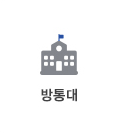목차
1. 서 론
2. 실험 방법
2.1 모재 및 육성용접 방법
2.2 잔류응력 측정
2.3 마모 시험기 제작 및 시험
3. 결과 및 고찰
3.1 육성 용접부 조직 및 경도
3.2 잔류응력 측정 결과
3.3 마모 시험 결과
4. 결 론
2. 실험 방법
2.1 모재 및 육성용접 방법
2.2 잔류응력 측정
2.3 마모 시험기 제작 및 시험
3. 결과 및 고찰
3.1 육성 용접부 조직 및 경도
3.2 잔류응력 측정 결과
3.3 마모 시험 결과
4. 결 론
본문내용
하는 것으로 측정되었다.
(3) 육성용접층의 마모시험 결과, 육성층은 상대재인 adamite 재료에 비해 마모율이 1.5-2배 더 크게 나타났기 때문에 롤 커플링과 접촉되는 roll chock부는 상대적으로 마모가 적게 일어나는 것으로 나타났다.
(4) 육성층이 마모에 의한 손상을 받으면 육성층 표면에 작은 notch들이 형성되므로서 반복응력 작용시 응력집중부가 될수 있으므로 피로강도를 저하시킬 것으로 예상되었으나, 피로 시험 결과는 마모 시험 유무에 관계가 없었다.
(5) 굽힘-피로 시험 결과, 육성된 강재는 모재에 비해 피로강도가 현저히 저하하고 있으며, 육성층을 제거한 열영향부의 피로강도 역시 모재에 비해 상당히 감소하는 것으로 나타났다.
(6) 육성용접 횟수가 많아짐에 따라 피로강도는 계속적으로 저하하는 경향을 나타내고 있다. 굽힘-피로 시험에 의한 2 X 106 사이클 피로한계는 모재가 약 100 kg/㎟, 1차 육성재가 약 60 kg/㎟, 2차 육성재가 약 50 kg/㎟, 그리고 3차 이상 육성재는 약 40 kg/㎟로 측정되었다.
(7) 이상의 피로 강도 실험치와 유한요소 해석에 의한 강도 계산치를 고려하여 적정 재사용 육성용접 횟수를 결정하였다.
5. 참고 문헌
(1) Van Vlack, Elements of Materials Science and Engineering, Third Edition, 1975,
Addison-Wesley Publishing Company, Inc., p.470.
(2) Metals Handbook, Vol. 15, Ninth Edition, p.678.
(3) D. J. Kotecki and J. S. Dgborn, Abrasion resistance of iron-based hardfacing
alloys, Welding J., 74 (1995), 269-278.
(4) K. Endo, Practical observations of initiation and propagation of fretting fatigue
cracks, Fretting Fatigue edited by R. B. Waterhouse, Applied Science Pub.,
London. 1981, p.127-141.
(5) J. Dziubinski and P. Adamiec, Fatigue strength of hardfaced parts under
complex loading, International Conf. on the Joining of Materials., 5-7 April
1993, Helsingor, Denmark, p.542-548.
(6) 산기연 연구보고서, Universal spindle roll coupling 수명 예측, 94A124, 1995.
Fig. 1. Heat treatment cycles of SNCM439 steel tested.
Fig. 2. Photo showing the sliding wear test machine.
Fig. 3. Optical micrograph showing the cross sectional microstructure of adamite specimen tested.
Fig. 4. Hardfaced specimen dimensions for wear test.
Fig. 5. Adamite specimen dimensions for wear test.
Fig. 6. Schematic representation of high cycle bend-fatigue test method.
Fig. 7. Optical micrographs of hardfacing layer from surface, heat affected zone, and the substrate for first trial. (Etched by 2% Nital)
Fig. 8. Optical micrographs of hardfacing layer from surface, heat affected zone, and the substrate for fourth trial. (Etched by 2% Nital)
Fig. 9. Cross sectional microhardness distributions for each hardfacing layers.
Fig. 10. Residual stress test results of hardfaced layers at the surface.
Fig. 11. Residual stress test results of hardfaced layers at the cross section.
Fig. 12. Comparison of wear rate between the hardfaced specimens and the counterpart adamite specimens.
Fig. 13. Secondary electron images of wear tested adamite specimen to show (a) cross sectional view and (b) surface morphology.
Fig 14. Secondary electron images of wear tested hardfaced specimen to show (a) cross sectional view and (b) surface morphology.
Fig. 15. S-N curves for base steel and various experimental conditions.
Fig. 16. S-N curves showing the effects of hardfacing cycle
Fig. 17. The effects of repeated hardfacing on the fatigue strength.
Fig. 18. Fracture macrographs of (a) base SNCM439 steel and (b) hardfaced SNCM439 steel.
Fig. 19. Fracture micrographs of (a) base SNCM439 steel and (b) hardfaced layer at the surface.
(3) 육성용접층의 마모시험 결과, 육성층은 상대재인 adamite 재료에 비해 마모율이 1.5-2배 더 크게 나타났기 때문에 롤 커플링과 접촉되는 roll chock부는 상대적으로 마모가 적게 일어나는 것으로 나타났다.
(4) 육성층이 마모에 의한 손상을 받으면 육성층 표면에 작은 notch들이 형성되므로서 반복응력 작용시 응력집중부가 될수 있으므로 피로강도를 저하시킬 것으로 예상되었으나, 피로 시험 결과는 마모 시험 유무에 관계가 없었다.
(5) 굽힘-피로 시험 결과, 육성된 강재는 모재에 비해 피로강도가 현저히 저하하고 있으며, 육성층을 제거한 열영향부의 피로강도 역시 모재에 비해 상당히 감소하는 것으로 나타났다.
(6) 육성용접 횟수가 많아짐에 따라 피로강도는 계속적으로 저하하는 경향을 나타내고 있다. 굽힘-피로 시험에 의한 2 X 106 사이클 피로한계는 모재가 약 100 kg/㎟, 1차 육성재가 약 60 kg/㎟, 2차 육성재가 약 50 kg/㎟, 그리고 3차 이상 육성재는 약 40 kg/㎟로 측정되었다.
(7) 이상의 피로 강도 실험치와 유한요소 해석에 의한 강도 계산치를 고려하여 적정 재사용 육성용접 횟수를 결정하였다.
5. 참고 문헌
(1) Van Vlack, Elements of Materials Science and Engineering, Third Edition, 1975,
Addison-Wesley Publishing Company, Inc., p.470.
(2) Metals Handbook, Vol. 15, Ninth Edition, p.678.
(3) D. J. Kotecki and J. S. Dgborn, Abrasion resistance of iron-based hardfacing
alloys, Welding J., 74 (1995), 269-278.
(4) K. Endo, Practical observations of initiation and propagation of fretting fatigue
cracks, Fretting Fatigue edited by R. B. Waterhouse, Applied Science Pub.,
London. 1981, p.127-141.
(5) J. Dziubinski and P. Adamiec, Fatigue strength of hardfaced parts under
complex loading, International Conf. on the Joining of Materials., 5-7 April
1993, Helsingor, Denmark, p.542-548.
(6) 산기연 연구보고서, Universal spindle roll coupling 수명 예측, 94A124, 1995.
Fig. 1. Heat treatment cycles of SNCM439 steel tested.
Fig. 2. Photo showing the sliding wear test machine.
Fig. 3. Optical micrograph showing the cross sectional microstructure of adamite specimen tested.
Fig. 4. Hardfaced specimen dimensions for wear test.
Fig. 5. Adamite specimen dimensions for wear test.
Fig. 6. Schematic representation of high cycle bend-fatigue test method.
Fig. 7. Optical micrographs of hardfacing layer from surface, heat affected zone, and the substrate for first trial. (Etched by 2% Nital)
Fig. 8. Optical micrographs of hardfacing layer from surface, heat affected zone, and the substrate for fourth trial. (Etched by 2% Nital)
Fig. 9. Cross sectional microhardness distributions for each hardfacing layers.
Fig. 10. Residual stress test results of hardfaced layers at the surface.
Fig. 11. Residual stress test results of hardfaced layers at the cross section.
Fig. 12. Comparison of wear rate between the hardfaced specimens and the counterpart adamite specimens.
Fig. 13. Secondary electron images of wear tested adamite specimen to show (a) cross sectional view and (b) surface morphology.
Fig 14. Secondary electron images of wear tested hardfaced specimen to show (a) cross sectional view and (b) surface morphology.
Fig. 15. S-N curves for base steel and various experimental conditions.
Fig. 16. S-N curves showing the effects of hardfacing cycle
Fig. 17. The effects of repeated hardfacing on the fatigue strength.
Fig. 18. Fracture macrographs of (a) base SNCM439 steel and (b) hardfaced SNCM439 steel.
Fig. 19. Fracture micrographs of (a) base SNCM439 steel and (b) hardfaced layer at the surface.
키워드
추천자료
 멘토링제도 시행방안
멘토링제도 시행방안 [양돈학]양돈에 관한 조사 요약 정리
[양돈학]양돈에 관한 조사 요약 정리 인수합병의 활성화 방안
인수합병의 활성화 방안 학교 급식소에서의 영양교육의 활성화방안
학교 급식소에서의 영양교육의 활성화방안 아동복지의 기본전제와 원칙
아동복지의 기본전제와 원칙 [과외]중학 체육 3-1학기 중간 에상문제 07
[과외]중학 체육 3-1학기 중간 에상문제 07 디지털 기술과 방송통신기술 발달로 파생되는 산업구조분석
디지털 기술과 방송통신기술 발달로 파생되는 산업구조분석 [체육교과서][체육과][체육교육][체육교과][체육]체육교과서의 특징, 체육교과서의 편찬 방향...
[체육교과서][체육과][체육교육][체육교과][체육]체육교과서의 특징, 체육교과서의 편찬 방향... [교육개혁][교육개혁의 내실화 방안]교육개혁의 의의, 교육개혁의 배경, 교육개혁의 중요성, ...
[교육개혁][교육개혁의 내실화 방안]교육개혁의 의의, 교육개혁의 배경, 교육개혁의 중요성, ... 자동차산업의 역사와 특성
자동차산업의 역사와 특성 간호지도자론A형
간호지도자론A형 산림기사, 산림산업기사 필기 자주 나오는 것 정리 [조림학, 산림보호학, 임업경영, 임도공학...
산림기사, 산림산업기사 필기 자주 나오는 것 정리 [조림학, 산림보호학, 임업경영, 임도공학...


































소개글